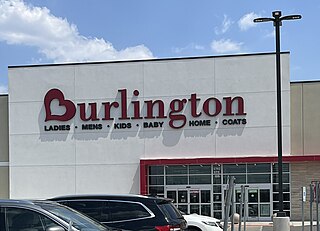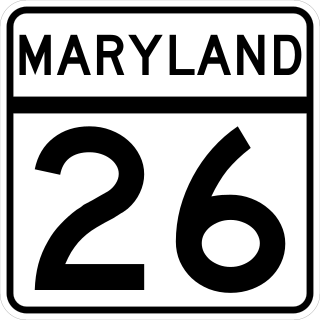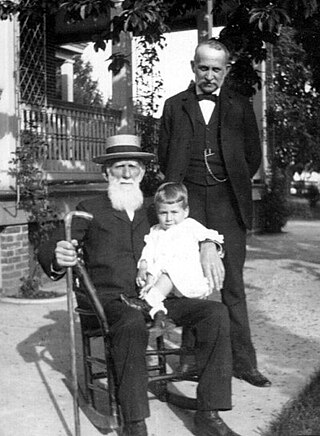The Mackintosh raincoat is a form of waterproof raincoat, first sold in 1824, made of rubberised fabric.

Burlington, formerly known as Burlington Coat Factory, is an American national off-price department store retailer, and a division of Burlington Coat Factory Warehouse Corporation with more than 1,000 stores in 40 states and Puerto Rico, with its corporate headquarters located in Burlington Township, New Jersey. In 2007, it was acquired by Bain Capital in a transaction and in 2008, Tom Kingsbury became president and CEO. The company went public again in 2013. Burlington is the third largest off-price retailer after TJX Companies and Ross Stores.

Hampden is a neighborhood located in northern Baltimore, Maryland, United States. Roughly triangular in shape, it is bounded to the east by the neighborhood Wyman Park, to the north by Roland Park at 40th and 41st Street, to the west by the Jones Falls Expressway, and to the south by the neighborhood Remington. The Homewood campus of the Johns Hopkins University is a short distance to the east.

Druid Hill Park is a 745-acre (3.01 km2) urban park in northwest Baltimore, Maryland. Its boundaries are marked by Druid Park Drive (north), Swann Drive and Reisterstown Road, and the Jones Falls Expressway / Interstate 83 (east).
Sharper Image is an American brand that offers consumers home electronics, air purifiers, gifts, and other high-tech lifestyle products through its website, catalog, and third-party retailers. The brand is owned by ThreeSixty Group, with the U.S. catalog and website owned and operated by Michigan-based Camelot Venture Group.

Power Plant Live! is a collection of bars, restaurants and other businesses in the Inner Harbor section of downtown Baltimore, Maryland. It was developed by The Cordish Companies and opened in phases during 2001, 2002, and 2003. The entertainment complex gets its name from the nearby "Power Plant" building, three blocks south on municipal Pier 4 on East Pratt Street facing the Inner Harbor, which was also later re-developed by Cordish.

The Cannon Mills Company was an American textile manufacturing company based in Kannapolis, North Carolina, that mainly produced towels and bed sheets. Founded in 1887 by James William Cannon, by 1914 the company was the largest towel and sheets manufacturer in the world.
Iconix Brand Group is an American brand management company that licenses brands to retailers and manufacturers, primarily in the apparel, footwear and apparel accessory industries.

Maryland Route 26 is a state highway in the U.S. state of Maryland. Known for most of its length as Liberty Road, the state highway runs 44.10 miles (70.97 km) from U.S. Route 15 in Frederick east to MD 140 in Baltimore. MD 26 connects Frederick and Baltimore with the highway's namesake of Libertytown in eastern Frederick County, the suburban area of Eldersburg in southern Carroll County, and the western Baltimore County suburbs of Randallstown, Milford Mill, and Lochearn. The highway also serves as a major thoroughfare in the western part of Baltimore, where the street is named Liberty Heights Avenue. MD 26 is maintained by the Maryland State Highway Administration outside of Baltimore and by the Baltimore City Department of Transportation within the city.

Maryland Route 25, locally known for nearly its entire length as Falls Road, is a state highway in the U.S. state of Maryland. It begins north of downtown Baltimore, just north of Penn Station, and continues north through Baltimore County to Beckleysville Road near the Pennsylvania state line. The road passes through the communities of Hampden, Medfield, Cross Keys, and Mount Washington in the city, and Brooklandville and Butler in Baltimore County. The entire length of MD 25 that uses Falls Road—and its county-maintained continuation north to Alesia—is a Maryland Scenic Byway, named the Falls Road Scenic Byway.
Pillowtex Corporation was a United States textile manufacturing company from 1954 to 2003. Beginning as a pillow manufacturer, the company diversified and manufactured bedsheets under various brand names. The company was officially declared bankrupt on October 7, 2003. The company liquidated over the following nine years, including machinery and brands.

The Jones Falls is a 17.9-mile-long (28.8 km) stream in Maryland. It is impounded to create Lake Roland before running through the city of Baltimore and finally emptying into the Baltimore Inner Harbor.

Candie's is an American women's clothing brand launched in 1978. Originally a shoe brand, it has increased its range of products, currently commercializing T-shirts, blouses, dresses, jackets, pants, lingerie, sweaters, etc.

Starter, Inc. is an American clothing manufacturer, focusing on major league sports teams. Starter's current licenses include MLB, NBA, NFL, and NHL teams. Non-sports agreements include a partnership with Coca-Cola.

Londontown Manufacturing Company, Inc., also known earlier as the Meadow Mill of the old Woodberry Manufacturing Company is a historic cotton mill industrial complex located at Baltimore, Maryland, United States. It is a four-story, Italianate red brick structure that features a square tower structure with a truncated spire-like roof having an open bell tower cupola. It sits on the west bank of the Jones Falls stream which runs north to south, parallel to the elevated Jones Falls Expressway.

Brick Hill is a national historic district in Baltimore, Maryland, United States. It is a small, isolated enclave neighborhood of 2- and 2+1⁄2-story masonry duplexes constructed about 1877 to house workers in the nearby Meadow Mill of the Woodberry Manufacturing Company. All but one of the eleven duplexes are constructed of brick, hence the four-acre enclave's traditional name; the other dwelling is built of stone. Two small two-story frame houses are also included in the district.

Blair Corporation is one of America's largest direct marketing mail order retailers, selling clothing and household goods. Founded in 1910 as the New Process Company by John Leo Blair, the company celebrated its 100th year in business in 2010. The company is well known for its retail catalogs, which are sent to millions of customers in the United States. While most business is done through mail-order, phone, or online, Blair also maintains retail stores in Warren and Grove City, Pennsylvania. Pennsylvania]], where it is based. Blair employs around 1200 associates.
A riding coat or jacket is a garment initially designed as outerwear for horseback riding. It protects the wearer's upper clothes from dirt and wear, and may provide additional protection in case of falls. It is very helpful to the riders.

Robert Poole (1818-1903) was an Irish-born engineer, inventor, entrepreneur, and benefactor. In 1843 he founded an ironworks in Baltimore, Maryland. For his workforce he hired members of what would become the first generation of modern metalworkers —an emerging trade whose numbers would swell to 250,000 nationally by the end of the 19th century. His enterprise became the largest of its kind in Maryland, with 800–850 employees, and, from the 1850s on, played a central role in the manufacture of iron-based infrastructure essential for private enterprise and public works in America.














